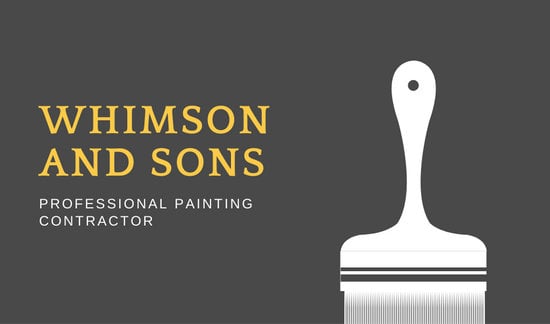Discover The Impact Of Seasonal Elements On The Efficiency Of Commercial Outside Paint And Determine The Optimum Times To Attain Long-Lasting Outcomes For Your Project
Discover The Impact Of Seasonal Elements On The Efficiency Of Commercial Outside Paint And Determine The Optimum Times To Attain Long-Lasting Outcomes For Your Project
Blog Article
Composed By-Burnham Bagger
When you're planning an industrial exterior painting project, seasonal factors can make or break your outcomes. You'll wish to think about exactly how temperature level and humidity impact paint application and drying out times. Selecting the appropriate season can ensure your paint adheres correctly and lasts longer. However which interior painting service near me are absolutely the most effective for this kind of work? Allow's check out the crucial elements that can affect your task's success.
The Impact of Temperature on Paint Application
When you're preparing an industrial outside paint project, the temperature level can dramatically affect how well the paint sticks and dries out.
Ideally, you want to repaint when temperatures range in between 50 ° F and 85 ° F. If it's also chilly, the paint might not treat properly, causing problems like peeling or fracturing.
On the other hand, if it's as well hot, the paint can dry as well swiftly, protecting against correct adhesion and causing an irregular finish.
You ought to also take into consideration the time of day; early morning or late afternoon uses cooler temperatures, which can be extra favorable.
Always examine the producer's recommendations for the details paint you're using, as they typically provide assistance on the optimal temperature level array for ideal results.
Moisture and Its Result on Drying Times
Temperature level isn't the only environmental factor that influences your industrial external paint project; humidity plays a considerable function as well. High humidity levels can reduce drying out times significantly, influencing the general high quality of your paint job.
When the air is saturated with wetness, the paint takes longer to treat, which can result in problems like bad adhesion and a higher risk of mildew growth. If you're painting on an especially damp day, be prepared for prolonged delay times between layers.
It's important to check local climate condition and plan appropriately. Ideally, go for moisture levels in between 40% and 70% for optimum drying out.
Maintaining these consider mind guarantees your project stays on track and provides a lasting coating.
Best Seasons for Commercial Exterior Paint Projects
What's the best time of year for your business exterior painting jobs?
Spring and very early fall are generally your best choices. Throughout these seasons, temperatures are light, and humidity degrees are commonly reduced, developing suitable problems for paint application and drying out.
Avoid painting and decorating , which can create paint to completely dry too quickly, leading to bad adhesion and surface. Likewise, winter's cool temperature levels can hinder proper drying out and curing, risking the longevity of your paint task.
Aim for days with temperatures between 50 ° F and 85 ° F for optimal outcomes. Bear in mind to check the regional weather forecast for rainfall, as wet conditions can ruin your task.
Planning around these variables ensures your paint task runs efficiently and lasts longer.
Conclusion
In conclusion, preparing your business exterior painting jobs around seasonal considerations can make a significant distinction in the result. By scheduling work during the optimal temperatures and moisture degrees, you'll make sure far better bond and drying times. Remember to keep an eye on neighborhood weather prediction and choose the right time of year-- spring and early fall are your best choices. Taking these steps will certainly aid you attain a long lasting and professional finish that lasts.
